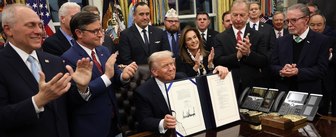While homicide rates have increased significantly in the U.S. during the pandemic, trends on other kinds of crime are less clear and the rate of increase in homicides fell in 2021 to about 5%. But Americans’ perceptions of crime trends are consistent by type of trend: A large majority say overall crime rates are increasing nationwide, and a smaller majority say crime is increasing in their communities. They’re divided by party on what’s fueling rising murder rates.
Large majorities say that in the last year there have been national increases in crime, violent crime, and murder, with less than 10% seeing a decrease. Republicans are more likely than Democrats to say there have been big increases, but the vast majority of members of both parties say there have not been decreases in any of the types of crime.
There are fewer partisan divides on local crime, with members of both parties being more likely to say there is little change in violent crime and crime overall in their area than in the U.S.
Even closer to home, there is little partisan divide: 52% of Americans are somewhat or very worried about themselves or a family member becoming a victim of violent crime; 48% are not too worried or not at all worried.
More Republicans than Democrats point to changes in police staffing or protests over police brutality as causes of increases in murder rates. Democrats are more likely to say the COVID-19 pandemic or changes in gun purchases have fueled the increase. A small majority of members of both parties, and Independents, say changes in the economy have contributed a lot to rising murder rates.
— Ian Davis contributed to this article
See the toplines and crosstabs from this Economist/YouGov Poll
Methodology: The Economist survey was conducted by YouGov using a nationally representative sample of 1,500 U.S. adult citizens interviewed online between January 22 and January 25, 2022. This sample was weighted according to gender, age, race, and education based on the 2018 American Community Survey, conducted by the U.S. Census Bureau, as well as 2016 and 2020 Presidential votes (or non-votes). Respondents were selected from YouGov’s opt-in panel to be representative of all U.S. citizens. The margin of error is approximately 3% for the overall sample.
Image: Getty








